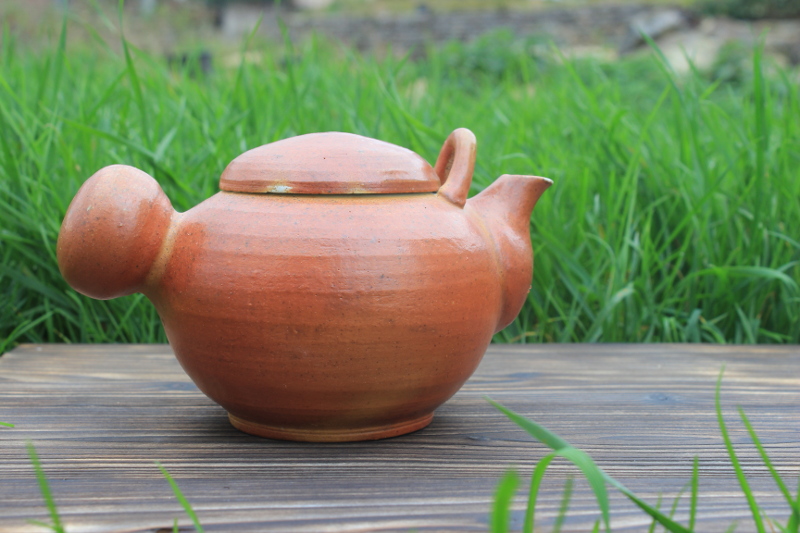 It needs an expert to build an object
It needs an expert to build an object
And the fire to preserve it for eternity
The physical creation process starts always with a well prepared piece of clay. I work most of the time on the pottery wheel. The clay is centered on the wheel and brought into shape. Everything that cannot be generated out of the direct throwing process, needs to be added afterwards by deformation or attachments. The latter requires a high level of diligence and skills, as fault mounted elements suffer from much higher stress during drying and firing and -if surviving the fire- do not show the necessary stability.
Areas, that cannot be reached during the throwing process or that need additional details, are normally turned in a „leather-dry“ state, for example the foot ring or the gallery of the tea pots and containers. Additionally, delicate patterns are cut into the half-dry clay. A last step before the firing process, may eventually be the application of a slip. This is done by fully or partially covering the surface with liquid clay to change the color or feeling of the surface. For some clay bodies I prefer this technique in wood fire, because I can use a very fine clay to throw tea pots and other pieces very detailed. These clay bodies do not look very spectacular when fired „naked“ in a wood fire kiln. But when applying a „flashing slip“ I can get wonderful red colors and fantastic flame traces on the surface without loosing the beauty and details of the tea pot.
 When the ceramic is dry, it will will be biscuit fired at 950°C. A chemical transformation has happened in the clay and the pieces are no longer so extremely fragile. Now the ceramic is ready for further decoration steps without the risk, that the clay is taking up water and looses its structural integrity.
When the ceramic is dry, it will will be biscuit fired at 950°C. A chemical transformation has happened in the clay and the pieces are no longer so extremely fragile. Now the ceramic is ready for further decoration steps without the risk, that the clay is taking up water and looses its structural integrity.
The applied (and partially own developed) glazes are adjusted by me to the respective firing process (with or without oxygen, electrical or wood fired kiln, temperature, coefficient of extension of the various clay bodies). The extension adjustment is especially important, because this avoids tensions in the glaze and between glaze and body, which would cause the glaze to crackle or chip off. When the glaze has dried, the oven can be filled.
It is important to know the kiln to determine, where the pieces find their best location to show the desired effects when fired. A kiln has areas with different temperatures and -in the wood fired kiln- also areas with more or less ash deposits. The kiln is now fired to stoneware temperature (1260°C in the electrical kiln, 1300°C in the wood fired kiln) and annealed, until the glaze has melted completely. In wood fire kiln I add salt and soda over several hours to create a shiny glaze surface on the ceramic. The sodium from salt and soda reacts with the quartz in the clay and builds a shiny silicate that is extreme stable and durable.

Ceramic from a wood fire is the oldest way to create ceramic had shown even today its very special fascination.

This video shows in a compressed way, how a tea pot is made.

A brief overview on everything you need to know about ceramic.